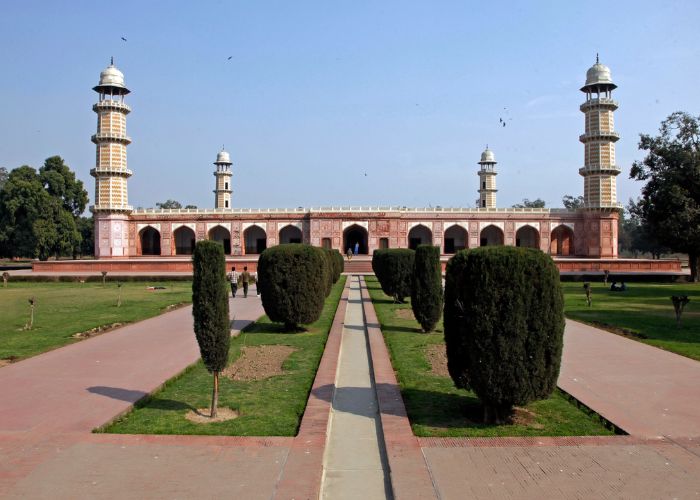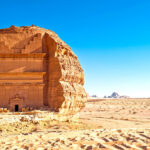Tomb of Jahangir History: The sublime and rich Mughal Area will persistently be looked into on the Indian subcontinent. One of various arrangement considers specking the locale is the Burial office of Jahangir, which is an assertion to the inventive brilliance of the Mughal line. In this memorial park in Lahore, Pakistan, the fourth Mughal sovereign Jahangir, whose unique name was Nur-ud-racket Muhammad Salim, is covered. The article plunges altogether into the social significance, planning considers, and long history of the Internment spot of Jahangir. Let’s read below about “Tomb of Jahangir History”
Tomb of Jahangir History
Historical Context:
Jahangir’s Reign:
After his dad, Akbar the Extraordinary, kicked the can in 1605, Jahangir became sovereign of the Mughals. Dependent upon his power, the country esteemed relative social and political dependability. Human enunciations held unbelievable importance for Jahangir, who was notable for his enduring through obligation to creating, painting, and plan.
Commissioning the Tomb:
In 1627, precisely when Sovereign Nur Jahan’s sidekick Jahangir kicked the container, she collected the Entombment spot of Jahangir. The milestone is situated in a tremendous nursery at Shahdara, near Lahore. Its area recommends the Mughal practice of building sepulchers in lovely, calm regions.
Architectural Marvels:
Design and Layout:
The burial chamber of Jahangir stands out because it combines Persian and Mughal building styles in a unique way. As is standard for garden-burial chambers made by the Mughals, the internment place incorporates the point of convergence of a quadrilateral nursery. Islamic art depicted the four streams of heaven as water trenches that divided the nursery into four equal parts.
Mausoleum Structure:
Run of the mill of Mughal arrangement is the square head working of the burial place made of red sandstone. The game plan is raised to an incomprehensible level by the four minarets, one on each corner. The burial place, improved with stunning marble trim work and Quranic etchings, stands promptly in the room’s middle.
Inscriptions and Calligraphy:
Magnificent lettering ornamented the internment chamber, made by gifted Mughal painters. The walls are embellished with poems written to pay tribute to the sovereign and extraordinary Persian section from Jahangir’s diaries, giving a short look into the ruler’s life and achievements.
Floral and Geometric Patterns:
Mughal designs typically feature elaborate numerical and organic subjects on the burial ground’s front. The meticulous construction exemplifies the Mughal value of excellence and fairness in building design.
Cultural Significance:
Mughal Gardens:
Considering everything, gardens were restricted scale varieties of heaven on the planet. Due to its exquisite arrangement and abundance of vegetation, the nursery including the Internment spot of Jahangir is a stunning portrayal of this thought. The site, relocated to a peaceful haven, reflects the Mughal love of nature.
Artistic Legacy:
Many consider Jahangir’s norm to have been the “Impressive Time of Mughal Painting.” The creative fortunes of the time, such as the ruler’s burial chamber and the works of art and compositions he requested, have contributed to the preservation of the creative tradition of the time. With its calligraphy, diverse models, and incredible craftsmanship, the burial chamber is a vital representation of the Mughal worth of innovative perfection.
Religious Harmony:
With their different Quranic engravings, the Mughals’ serious gathering is on full show at this burial chamber. The Mughal rulers empowered serious resistance and maintained the improvement of plans that joined elements from two or three religions, no matter what how they were Muslims.
Conservation Efforts and Challenges:
Preservation Challenges:
The Internment spot of Jahangir has been pardoned, crippled routinely, and impacted by typical parts for quite a while. This old site is at risk for falling because of pollution, urbanization, and excusal.
Conservation Initiatives:
Due to the significance of safeguarding social legacy, numerous protection initiatives have been initiated to ensure that Jahangir’s burial chamber remains in resurrected condition. Projects for safety include everything from tutoring programs funded by the state to recovery programs and scene setup.
Balancing Preservation and Public Access:
While working with well known places, it is normal practice to discover a few harmony among local area and security. Finding a trade off that guarantees these specific knickknacks are both open and remained mindful of for people in what the future holds is exceptionally basic.
The Tomb of Jahangir Today:
Tourist Attraction:
Guests to the Internment spot of Jahangir coordinate both history fans and explorers. This area should be visited by everyone who is interested in the Mughal era because of its verifiable significance, compositional beauty, and peaceful setting.
Cultural Events:
The broad enhancements held in the nearby gardens further component the site’s significance as a social spot. Celebrations, craftsmanship shows, and melodic showcases restore the Mughal time’s well known past, overcoming any obstacle between the two periods.
Educational Significance:
The improvement isn’t just a wonderful sight, yet besides an uncommon asset for investigating the basic and innovative accomplishments of the Mughal Space. The mausoleum is a living exhibition where visitors can learn about the social customs of the Mughal domain by participating in studios, educational events, and guided tours.
Conclusion:
The Mughal time span’s imaginative capacity and social overflow are adulated in the great Entombment office of Jahangir. The genuine significance, essential marvels, and social congruity of this entombment place are turning out to be all the more clear as we inspect its subtleties more critical; it is something past a development; a living inheritance has captivated and contacted individuals for a genuinely extended period of time. On the off chance that we wish for these important old rarities to outlast the Mughals, we should all do our part to screen them. I hope you like reading “Tomb of Jahangir History”







